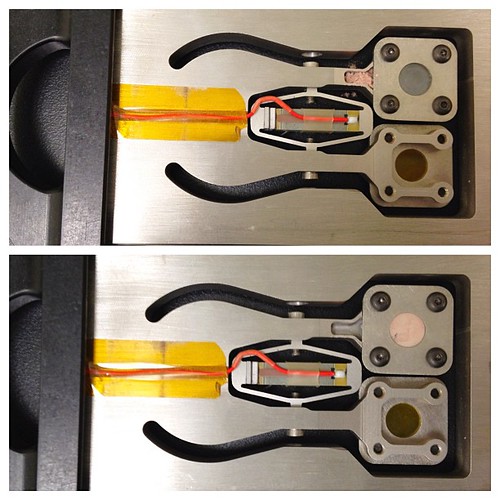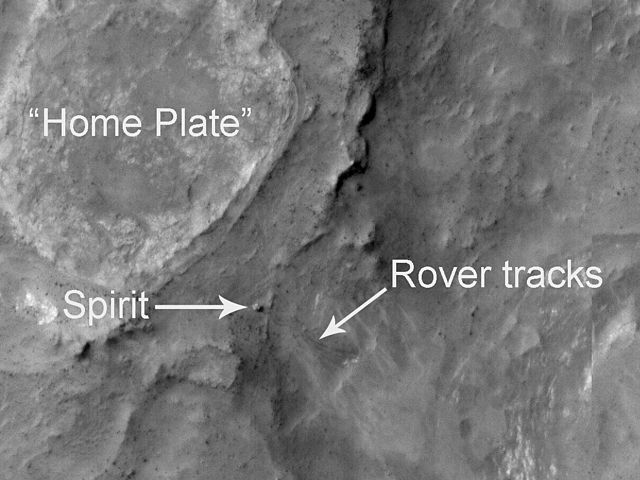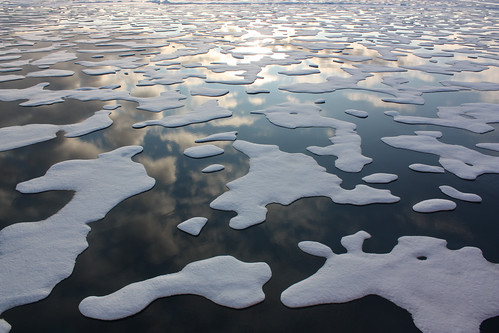This is the portable x-ray diffraction machine I’m using for my second research project with Brian. We’re analyzing rocks from volcanic environments.
This big tuning fork is used to shake the sample, since you can’t move the x-ray emitter around the sample, as you normally would, when you’re on Mars. In the top photo I’ve put the sample in the well, in the bottom photo I’ve turned on the external shaker, and the sample was moved into the tiny windowed area, ready to be analyzed.
This XRD is a duplicate of the XRD onboard the Mars Science Laboratory! See its sister ‘in action’ in this MSL animatic:








